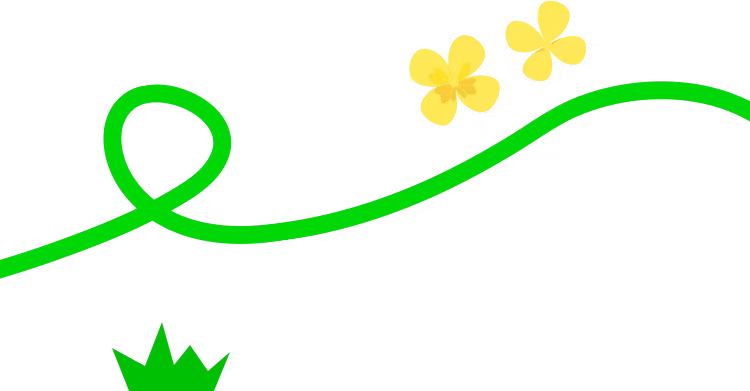Image format
WebP
01
WebP (pronounced "weppy") is an image file format that supports both lossy and lossless compression, derived from the image encoding format VP8. Developed by Google after acquiring On2 Technologies, it is released under the BSD license.
WebP is a new image technology launched by Google. It enables effective compression of web images without compromising format compatibility or actual clarity, thereby accelerating overall web page download speeds.
Like JPEG, WebP uses predictive coding for lossy compression. However, Google states that the primary advantage of this format lies in its high efficiency. They found that "at the same quality level, WebP images are 40% smaller in size than JPEG images."
The downside is that encoding WebP images "takes 8 times longer than encoding JPEG images."
BMP
02
Bitmap (abbreviated as BMP; full name: BitMaP) is an image file format independent of hardware devices, with wide usage. It adopts a bitmap storage format and does not use any compression except for optional image depth, resulting in large file sizes. BMP files support image depths of 1bit, 4bit, 8bit, and 24bit. When storing data, BMP files scan images from left to right and bottom to top.


BMP (Windows Bitmap) can store a single raster image with any color depth (from black and white to 24-bit color). The Windows Bitmap format is compatible with other Microsoft Windows programs. It does not support file compression and is not suitable for web pages. Overall, the drawbacks of the Windows Bitmap format outweigh its advantages. For high-quality photo images, use PNG, JPEG, or TIFF files. BMP files are suitable for wallpapers in Windows.

TIF
03
Tagged Image File Format (abbreviated as TIF or TIFF; full name: Tag Image File Format) was developed by Aldus and Microsoft for desktop publishing systems as a widely used image file format.
TIFF supports multiple encoding methods, including RGB compression, RLE compression, and JPEG compression.
TIFF is one of the most complex existing image file formats. It is extensible, user-friendly, and modifiable, compatible with image editing programs running on environments like IBM PC.
GIF
04
Graphics Interchange Format (abbreviated as GIF; full name: Graphics Interchange Format) is an image file format developed by CompuServe in 1987. GIF files use LZW algorithm-based lossy compression for continuous-tone images, with a typical compression ratio of around 50%. It is not tied to any specific application and is supported by almost all related software, with numerous public-domain programs using GIF images.
GIF image data is compressed using variable-length algorithms. Its image depth ranges from 1bit to 8bit, meaning GIF supports a maximum of 256 colors. Another feature of GIF is that a single file can store multiple color images. Displaying these images sequentially on a screen creates a simple animation.
GIF decodes quickly because interlaced GIFs can be scanned in four passes during decoding. The first pass shows 1/8 of the image, and the second pass shows 1/4, but this already reveals the overall outline. Interlaced storage makes GIFs appear to load faster than other formats. Additionally, GIF does not support alpha transparency channels.
JPEG
05
Joint Photographic Experts Group (abbreviated as JPEG; full name: Joint Photographic Expert Group) is one of the most common image formats, with file extensions ".jpg" or ".jpeg". Developed by a software development consortium, it is a lossy compression format that reduces image storage size by discarding redundant or unimportant data, which may cause quality loss. Excessively high compression ratios significantly degrade decompressed image quality, so high ratios are not recommended for high-quality needs. However, JPEG’s advanced compression technology removes redundant data to achieve high compression rates while retaining rich, vivid details—balancing small file sizes with good image quality. It is flexible, allowing adjustable quality with compression ratios typically between 10:1 and 40:1.
JPEG primarily compresses high-frequency information while preserving color data well. It supports 24-bit true color, making it ideal for the internet (reducing transmission time) and images requiring continuous tones.
PNG
05
Portable Network Graphics (abbreviated as PNG; full name: Portable Network Graphics) is the latest widely accepted image format for the web. PNG offers lossless compression with files 30% smaller than GIF. It supports 24-bit and 48-bit true color, along with other technical features. Though relatively new (so not all programs support it), software like Photoshop can process and save PNG files.
PNG supports advanced lossless compression, alpha channel transparency, gamma correction, interlacing, and is supported by modern web browsers.
RAW
06
RAW translates to "raw material" or "unprocessed data." A RAW file contains all photo information from the sensor before it enters the camera’s image processor. Users can edit RAW images using specific software on PCs.
In traditional sensors, each pixel captures only one color, with 10 or 12 bits of data per pixel (12-bit is most common), stored in the RAW file. The camera’s built-in processor interpolates this data to calculate three color channels, outputting a 24-bit JPEG or TIFF image. While TIFF retains 8 bits per color channel, its file size is larger than RAW (TIFF: 3×8-bit channels; RAW: 12-bit RAW channel). JPEG reduces size via compression but sacrifices quality. Thus, RAW balances quality/color retention and storage efficiency (compared to TIFF). Some high-end cameras output nearly lossless compressed RAW files.
A notable drawback of RAW is its inconsistency: formats vary by camera brand and model. Users must use manufacturer-provided software for editing, causing inconvenience.
